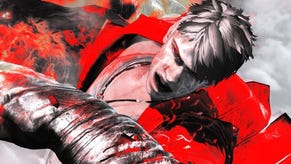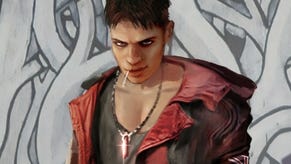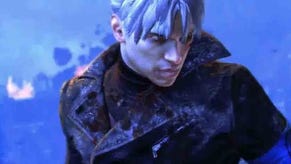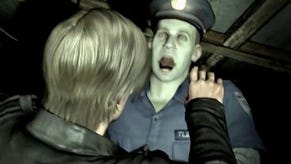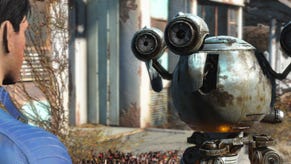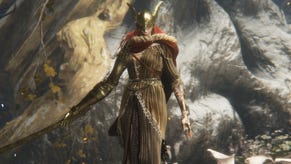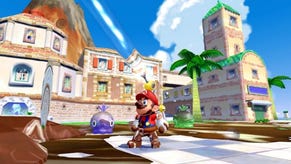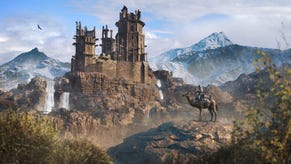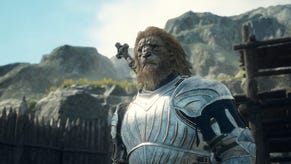Devil May Cry: how Capcom turned public opinion around
Plus, thoughts on the frames per second debate.
When the new Devil May Cry game was announced in 2010 fans of the series were united in their criticism.
With a solitary CG trailer showing a very different "emo Dante" as he was called, with dark, not white hair, and - the final insult - news that the game would be developed not in Japan but in the UK by Heavenly Sword and Enslaved maker Ninja Theory, fans erupted.
Now, two years later, much of the negativity has been replaced by positivity and genuine excitement for what looks like one of the more interesting games of 2013.
At the Tokyo Game Show last week Eurogamer spoke with Capcom US producer Alex Jones, who has for two years worked as the conduit through which Ninja Theory and Capcom Japan communicated on the project, to get some insight into how public opinion on Devil May Cry was turned kicking and screaming around.

"We thought we'd initially get a little flak," he said. "We didn't think we would get the amount we did and for the duration we did. It's fair to say that part was a little surprising. But part of the reason the snap back has been pretty dramatic is the initial sense of, oh my god his hair is not white, was not really ever about the white hair.
"It was that we were asking really hardcore fans of the series to accept a tonne of change up front, which is not being done by Japan any more, at least, they didn't know how deeply Japan was going to be involved in it.
We were making all these changes, and it was totally reasonable for the white hair to be a repository for larger fears of whether it was going to play like a DmC game, which I think was always the case - Capcom US producer Alex Jones
"All they knew was it was going to be done by Ninja Theory. They knew there was a redesign of the character that is very different and it's got an acknowledged change in tone. So we were making all these changes, and it was totally reasonable for the white hair to be a repository for larger fears of whether it was going to play like a DmC game, which I think was always the case.
"So very early we thought we'd end up getting some negativity or at least some push back on it. But we always thought because of how closely we were working with guys from Japan, particularly on the combat stuff, that once people saw the game and saw it played and eventually get their hands on the controller, that they would see it was a proper DmC game and Ninja Theory were going to be excellent stewards of the IP and everything you would want a DmC game to be it would be.
"The fear was never mostly about the white hair. It was about other things. We've addressed those because we knew we had to."
Throughout the last 12 months Capcom has released a number of gameplay videos that have shown DmC in action. It is these videos, coupled with the release of more information about the combat system, the good work Ninja Theory has done in creating eye-catching set pieces and environments, and the nature of the collaboration between East and West that has had the biggest impact.
"That's part and parcel with having enough of the game that you can show it," Jones said. "At first all we had was a character and a CG trailer. It wasn't gameplay. So you had a statement of here's the sort of game we want to make and it had nothing to show how fluid it was going to control and show the variety of the combat.
"Once we started to get enough assets that we could show the actual game as opposed to CG versions, that would change it."
Fans have had other areas of concern, though, and one of them revolves around the frames per second count. Combo lovers are used to Devil May Cry running at 60 frames per second, but Ninja Theory's effort runs at a steady 30.
Jones defended the decision, saying playtesters report DmC feels like a DmC game.
"60 frames is 60 frames. I'm not going to try to argue people off of math," Jones conceded. "But what I can say is working with the Capcom Japan guys and animators, if you have people touch the game they'd say it feels very responsive and they don't notice it.
"And 30 frames frees you up to do a lot of other stuff in terms of interactive environments and a richer palette as far as the visuals are concerned that I think more than make up for whatever you give up in maybe the animation fidelity responsiveness equation, which we don't concede we're giving up a tonne because we worked for at least a year-and-a-half on that kind of stuff trying to get the animators and the combat designers to get the most out of a 30 frames per second engine.
"Everyone will have to come to their own conclusions once they get the controller in their hands, but we've put it in enough hands at this point that people say it plays and controls like a DmC game from their point of view. So I feel like we've done enough in that sphere that people will be pretty happy with how it feels."
Jones said he expects to see many YouTube videos of advanced players showing off their combo skills when the game comes out.
"We've done a lot in terms of opening up the flexibility of the combo system, like seamlessly switching between weapons and going from changing classifications of weapons to changing weapons from within a classification, all on either just the triggers or the d-pad.
"You can pull off some pretty cool stuff now. There are a couple of combat designers who send us periodic play blasts of new stuff. So I don't expect to see any drop off in the amount of people showing us their skill online once we get this out."


